MARKET OVERVIEW
The global LTCC market and industry will be at a crossroads where technology, specialty applications, and precision technology will propel it much further than its current prospects. Low Temperature Co-fired Ceramic technology not only will be of value for current electronics production but will also open new paths in industries where robustness, miniaturization, and multicapability become necessities. The identity of the market will no longer be limited to conventional applications; rather, it will spread its reach into non-traditional environments where performance under challenging conditions will differentiate it from the competition in materials and technology.
Over the next several years, LTCC-based solutions' adoption will move beyond the typical communications and consumer electronics markets, penetrating further into advanced automotive electronics, medical equipment, aerospace communications modules, and industrial automation systems. All of these markets will require components that are capable of sustaining operational integrity in environments where temperature variations, shock, and long-term reliability will continue to be paramount. The multichip capability of LTCC technology to combine many functions in a small footprint will become a definitive advantage, enabling engineers to design lighter, more efficient solutions without compromising performance.
Outside the current domain, research work will extend the horizon of LTCC applications to defense-grade hardware, future satellite systems, and wearable health monitors with unprecedented accuracy. As this is developed, manufacturing processes will see more refinement, providing not only better material uniformity but reduced manufacturing cost over the long term. All this will render LTCC-based technologies more affordable for smaller electronics players, paving the way for greater experimentation and usage.
The LTCC product development pipeline will more and more include artificial intelligence-enabled design, sophisticated thermal modeling, and environmentally friendly production techniques. By bringing all of these together, the resulting components will not only be more capable and reliable but also meet environmental expectations. As companies work to minimize their environmental impact, the trend toward lower waste-generation materials and processes will put LTCC technology in a strong position, especially when combined with recyclable substrates and energy-efficient firing techniques.
In addition, the impact of the global LTCC market will not stop with direct hardware use. It will also stimulate new ideas in the design of circuits, which will allow completely new architectures that take advantage of the structural and thermal stability of LTCC. These new breakthroughs will enable a new generation of devices for use in environments once deemed unacceptable for compact electronics, including deep-sea exploration modules, unmanned aerial surveillance platforms, and long-duration planetary probes.
As manufacturing ecosystems around the world become increasingly interconnected, there will be cooperative development among LTCC manufacturers, material experts, and application engineers that will result in paradigm-changing breakthroughs. The marketplace of the future will see a store where the global LTCC market not only serves today's needs but also has an active hand in defining the ability of tomorrow's most sophisticated technologies. Its growth beyond the current ambit will be characterized by accuracy, tenacity, and flexibility traits that will make it useful for generations to come.
Global LTCC market is estimated to reach $13,833.84 Million by 2032; growing at a CAGR of 5.4% from 2025 to 2032.
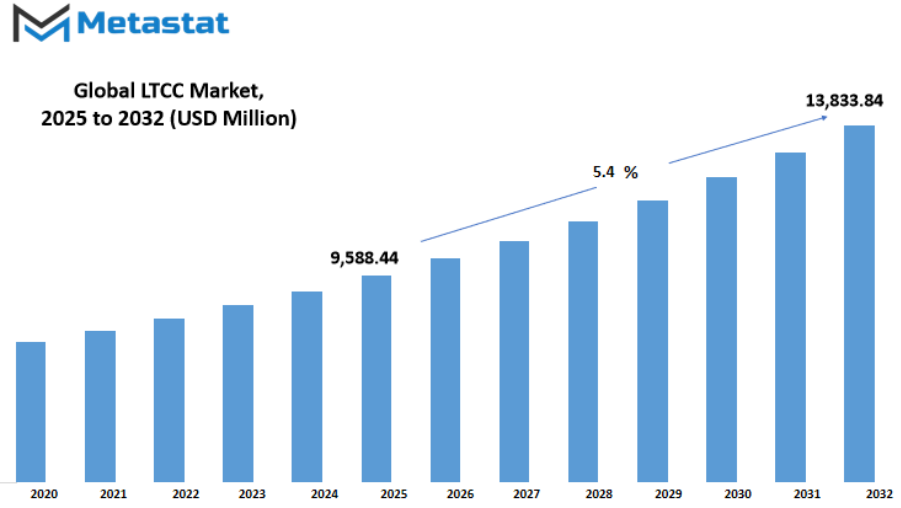
GROWTH FACTORS
The global LTCC market is growing as corporations are trying to find smaller and greater excessive-appearing electronic components. Modern gadgets are speculated to provide extra electricity, velocity, and functionality in reduced sizes, which compels manufacturers to find technology along with LTCC which are able to pleasing these necessities. The miniaturization trend in purchaser electronics, coupled with the call for for multiplied performance, has led to LTCC turning into a broadly sought-after alternative for product engineers and architects from across the globe. Its capability to aid high-frequency operation and stay strong beneath harsh conditions as properly in addition enhances its splendor.
The car and communications industries are some of the fastest-growing supporters of LTCC generation. In vehicles, specially within the transition closer to electric and self sufficient cars, there's a developing call for green and reliable digital modules. Likewise, the global deployment of 5G communique networks is based on additives capable of working perfectly at excessive frequencies, and LTCC is perfectly placed for that requirement. As other international locations hold to enhance their conversation infrastructure, the marketplace for these parts will keep expanding, offering new possibilities for suppliers and manufacturers.
The global LTCC market isn't without its challenges, but. The upfront capital for setting up LTCC manufacturing is tremendous, which could deter smaller corporations from getting concerned. The manner additionally relies upon on positive substances, and the fact that they're no longer comfortably to be had makes the producing manner slower or more luxurious. In addition, the producing manner for LTCC products entails high-precision know-how, and this intricacy can render it more difficult for corporations to scale rapidly. These issues can impede market growth, even when there is expanding demand.
Conversely, there is still ample scope for growth. The development of IoT and wearables is building up an insistent demand for small and energy-efficient components, which LTCC can supply. Products such as smartwatches, health trackers, and networked sensors are likely to take advantage of its reliability and performance, and hence this is a natural market for this industry. Also, in aerospace and defense, where dependability and high-performance electronics are paramount, LTCC is being used increasingly in sophisticated systems. With continuing breakthroughs in these industries, the international LTCC market will have increasing opportunities, and hence it is a technology to watch out for in the years to come.
MARKET SEGMENTATION
By Material Type
The global LTCC market is experiencing stable growth with the growing want for miniature, excessive-functioning components in telecommunication and conversation structures. Low Temperature Co-fired Ceramic (LTCC) generation has the advantage of combining several capabilities in a unmarried, small-sized module, thus making it a desired option for use in telecommunication, automotive, medical gadgets, and consumer electronics programs. As industries call for miniaturization and improved overall performance, LTCC substances are an increasing number of turning into a important solution due to the fact they could deliver excessive reliability, thermal balance, and low sign loss in complex circuits.
On the material type side, glass-ceramic commands a key position in the market, having a value of $7,293.94 million. The segment is advantaged by its good mechanical strength, superior insulation performance, and compatibility with high-frequency devices. It is notably used inside the manufacturing of excessive-density interconnects and multilayer substrates. Crystal-primarily based LTCC substances, in aggregate with glass-ceramic, are an increasing number of in cognizance because of their outstanding dielectric houses, favorable for specialized electronic gadgets that call for specific frequency manipulate. Composite LTCC materials, including a aggregate of various residences for advanced overall performance, are more and more being followed as well, particularly in which particular thermal and mechanical homes need to be applied.
The increasing uptake of 5G technology will, in turn, increase the call for LTCC additives by fabric type. Telecommunication infrastructure is depending on high-frequency components with steady overall performance, and LTCC satisfies those situations admirably. Additionally, developments in automobile electronics, together with electric automobiles and driving force-assistance structures, are widening LTCC packages. The resilience of the technology and ability to resist harsh operating conditions make it a compelling choice for those stressful applications.
As technology advances, producers are directing their interest to improving fabric formulations to enhance performance, lower fees, and cope with the requirements of new programs. Proven reliability, versatility, and flexibility, combined in LTCC substances, assure that these materials will stay an important part of the arena's electronics zone. With these blessings, the market will hold its momentum of growth driven by way of the relentless quest for faster, smaller, and greater efficient gadgets.
By Product
The global LTCC market is making consistent progress with industries increasingly applying sophisticated ceramic technologies into high-performance applications. Low Temperature Co-fired Ceramics (LTCC) are appreciated for their potential to combine several functions into compact designs without compromising on reliability. With electronic devices becoming smaller but more powerful, LTCC has a crucial function in fulfilling the need for efficient, reliable, and thermally stable components. The industry is defined by sectors like telecommunications, automotive, aerospace, and medical devices, all of which look for solutions that tolerate tough conditions without sacrificing performance.
Based on product type, the LTCC market is segmented into substrates, components, and modules. Substrates are the foundation layer upon which circuits are constructed and are prevalent in industries where high-frequency performance and low signal loss are necessities. These substrates possess very good thermal and mechanical characteristics, hence ideal for use in applications where precision and stability are of the essence. Components, however, consist of various functional items like resistors, capacitors, and inductors built into the LTCC structure. Their integration minimizes space demands and enhances overall efficiency in intricate systems. Modules are the most integrated form, in which several LTCC components and circuits are packaged together to form an off-the-shelf ready-to-use functional component.
Substrate demand is fueled by the versatility and adaptability of substrates for high-frequency electronics, particularly in radar systems and 5G infrastructure. Components are helped by the continued miniaturization trend in consumer electronics and automotive electronics, where there has to be a balance between performance and space efficiency. Modules support specialized, high-value applications, with a compact solution for industries that value both performance and reliability. The growing use of automation, IoT devices, and electric powered motors is probably to generate big opportunity for all three product sorts in the foreseeable future.
Overall, the enlargement of the global LTCC market mirrors the growing call for for high-performance, compact electronic answers in various industries. Substrates, additives, and modules all have their precise roles to play in pleasant these needs, permitting improvements in communique, transportation, and generation. With industries nonetheless traumatic greater performance and overall performance, LTCC merchandise will stay a key piece of the answer in supporting to create the next generation of digital systems.
By End-Use Industry
The global LTCC market is drawing fundamental interest because of the material's versatility and potential to address the growing needs of various industries. LTCC or Low Temperature Co-fired Ceramic is preferred for its smaller length, high reliability, and capacity to deal with complex electronic circuits. As the call for for faster, greater efficient, and miniaturized electronic devices rises, the generation of LTCC is rising as a possible option. Its versatility to numerous applications locations it as a vital detail in the development of both industrial and business industries.
The automotive field is utilizing LTCC in sensors, control gadgets, and protection gadgets, which resource within the transition in the direction of related and self sustaining vehicles. The warmth, vibration, and difficult surroundings resistance of the era makes it most advantageous to be used in motors that need sustained overall performance in excessive conditions. Telecommunications is some other full-size sector influencing the LTCC market. With the quick boom of 5G networks and the hunt for quicker communications generation, LTCC contributes to improved sign integrity, expanded bandwidth, and extra dependable connections.
Consumer electronics, too, experience the performance and small length of LTCC. Smartphones, wearables, and different hand held gadgets use LTCC additives to perform better with out the usage of up greater area. For aerospace and protection, reliability is paramount, and the capacity of LTCC to withstand extreme conditions makes it a mission-crucial system preference for radar systems, for example, to satellite communications, where precision and reliability are vital.
Other sectors, together with industrial automation and scientific gadgets, additionally put into effect LTCC answers with a purpose to decorate operational efficiency and product great. With additional sectors adding advanced electronics to their tactics, the global LTCC market will keep growing regularly. This increase is pushed by way of the demand for smaller, faster, and extra dependable additives with the capability to control greater technological demands at the same time as providing long-term overall performance.
|
Forecast Period |
2025-2032 |
|
Market Size in 2025 |
$9,588.44 million |
|
Market Size by 2032 |
$13,833.84 Million |
|
Growth Rate from 2025 to 2032 |
5.4% |
|
Base Year |
2024 |
|
Regions Covered |
North America, Europe, Asia-Pacific Green, South America, Middle East & Africa |
REGIONAL ANALYSIS
The global LTCC market is divided across multiple regions, each of which has distinct industrial strength and requirements. North America constitutes a primary part of the marketplace as a whole, normally led via the U.S., Canada, and Mexico. The United States spearheads the vicinity in terms of its advanced manufacturing base and strong presence of electronic factor manufacturers, even as Canada and Mexico add to the motive with area of interest manufacturing and increasing use in industrial markets. They revel in strong technological infrastructure, which backs studies as well as mass-scale production. This local prowess enables North America to hold pace with competition inside the worldwide LTCC scene.
Europe has a huge presence inside the LTCC market, with the UK, Germany, France, and Italy making full-size contributions, as well as the Rest of Europe. Germany's engineering prowess and the United Kingdom's lifestyle of innovation make contributions extensively to the creation of state-of-the-art LTCC-based solutions. Automotive and aerospace industries in France and Italy generate steady demand for excessive-overall performance ceramic additives. Europe's wealthy commercial packages throughout a wide range of industries make sure the vicinity keeps its position as a great player inside the worldwide market, driven via robust R&D spending and demonstrated deliver chains.
Asia-Pacific ranks as one of the fastest-growing areas for LTCC merchandise, spearheaded through India, China, Japan, and South Korea. China's production base and Japan's electronics enterprise are based totally on precision, which shape a powerful aggregate of volume and exceptional. South Korea, with its technological edge, adds by way of advanced applications in consumer electronics and telecommunications, while India is seeing consistent growth in electronics manufacturing and infrastructure development. The Rest of Asia-Pacific also enjoys increasing industrialization and adoption of technology, such that this region is also a target region for market growth.
In South America, Brazil and Argentina are key markets, driven by developing industrial capabilities and rising use of electronic components in numerous sectors. Brazil's expanding automotive sector and Argentina's expanding consumer electronic market are providing new areas for the use of LTCC. The Rest of South America, although smaller in size, is slowly embracing LTCC technology as industrial modernization continues.
Middle East & Africa segment comprises GCC Countries, Egypt, South Africa, and the Rest of the Middle East & Africa. GCC Countries are leading adoption with investments in defense, telecom, and infrastructure, whereas South Africa's manufacturing industry is gradually adopting LTCC components for high-tech applications. Egypt and the rest of the countries in the region are also experiencing gradual market growth, supported by technology imports and increasing demand for advanced electronics. In combination, these geographies create a differentiated and integrated global LTCC market, each geography making its own contribution towards the growth and development of the industry.
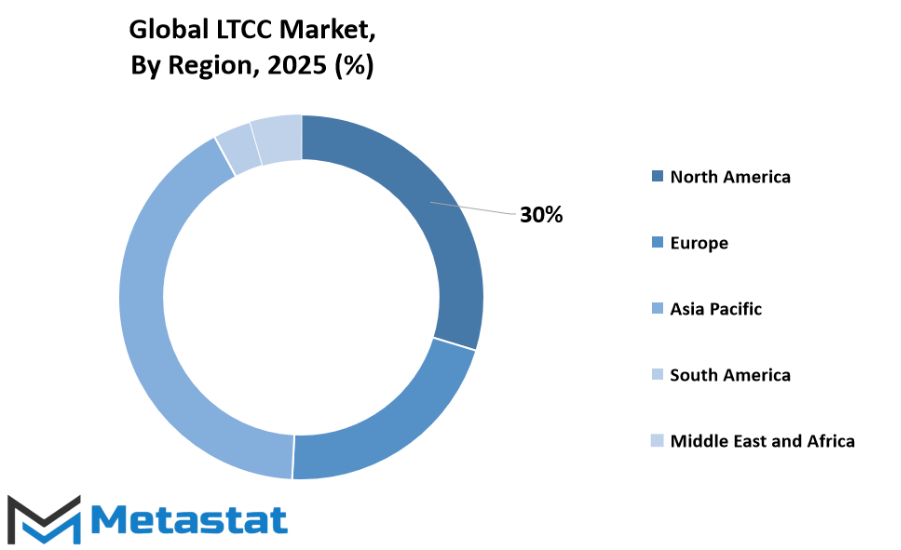
COMPETITIVE PLAYERS
The global LTCC market is step by step emerging as industries call for more miniature, high-performance, and stable digital additives. LTCC technology provides the potential to increase multilayer ceramic substrates with built-in passive additives, making it an appealing solution for telecommunication, automobile electronic, aerospace, medical device, and client electronics programs. Its excessive-frequency operation functionality, resistance to intense environmental conditions, and long-time period balance have rendered it as a sought-after answer for producers searching out green and reliable electronic packaging. With growing demand for faster, extra compact, and electricity-green gadgets, LTCC is taking center stage in pleasant the ones technological needs.
The use of LTCC substances is likewise being pushed through the tendencies in 5G communications, IoT packages, and automobile radar structures, wherein excessive-frequency overall performance is extra crucial. Several businesses are now running on improving manufacturing processes to lower the value whilst nevertheless ensuring precision, that is critical for mass consumption. Moreover, LTCC's capability to combine several electronic capabilities right into a small shape additionally suits with the present day fashion toward miniaturization and multifunctional concepts. This has also drawn the hobby of both traditional producers and new entrants, leading to improved opposition and innovation inside the enterprise.
Some of the leading players that are involved in the global LTCC market include Murata Manufacturing Co., Ltd., Kyocera Corporation, TDK Corporation, Hitachi Metals, Ltd., CCI Eurolam, KOA Corporation, Fralock LLC, Heraeus Electronics, IMST GmbH, Applied Materials, Inc., NEOTech, and VIA Electronic GmbH. These firms are spending big on research and development in order to upgrade product performance, streamline manufacturing, and venture into new market areas. Strategic partnerships, mergers and acquisitions, and expansions of capacity are typical strategies of these firms as they seek to expand their presence in the market and address the needs of multifaceted industries.
As manufacturing industries like automotive, aerospace, and medical begin to include increasingly complex electronics into their products, demand for dependable and space-saving solutions such as LTCC will grow. Even environmental regulation and the drive towards "green" manufacturing are shaping the creation of LTCC materials employing environmentally friendly processes without sacrificing performance. With deep support from large industry participants and increasing demand from high-tech markets, the global LTCC market has the potential for consistent growth and is thus a key region of concern for technology developers and end-users alike who require long-term reliability and performance.
LTCC Market Key Segments:
By Material Type
- Glass-Ceramic
- Crystal
- Composite
By Product
- Substrates
- Components
- Module
By End-Use Industry
- Automotive
- Telecommunications
- Consumer Electronics
- Aerospace And Defense
- Other
Key Global LTCC Industry Players
- Murata Manufacturing Co., Ltd.
- Kyocera Corporation
- TDK Corporation
- Hitachi Metals, Ltd.
- CCI Eurolam
- KOA Corporation
- Fralock LLC
- Heraeus Electronics
- IMST GmbH
- Applied Materials, Inc.
- NEOTech
- VIA Electronic GmbH
WHAT REPORT PROVIDES
- Full in-depth analysis of the parent Industry
- Important changes in market and its dynamics
- Segmentation details of the market
- Former, on-going, and projected market analysis in terms of volume and value
- Assessment of niche industry developments
- Market share analysis
- Key strategies of major players
- Emerging segments and regional growth potential



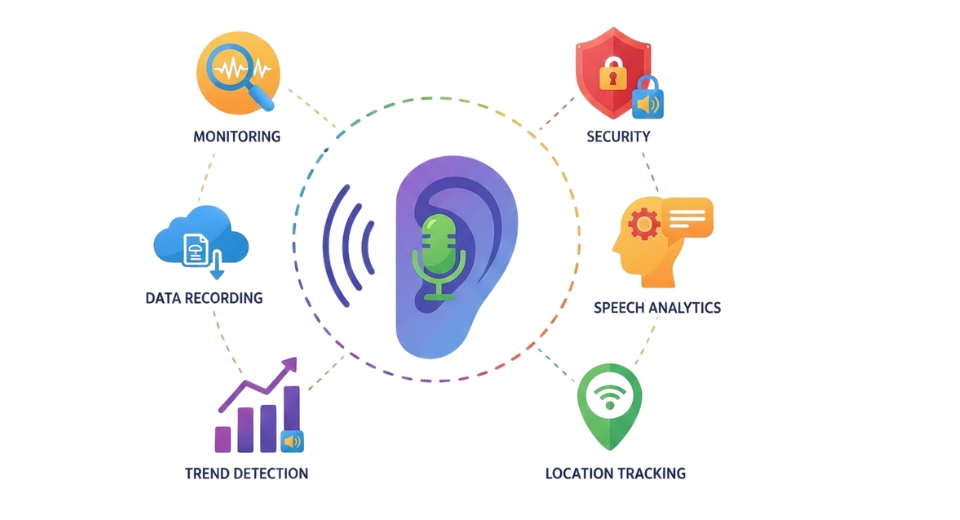
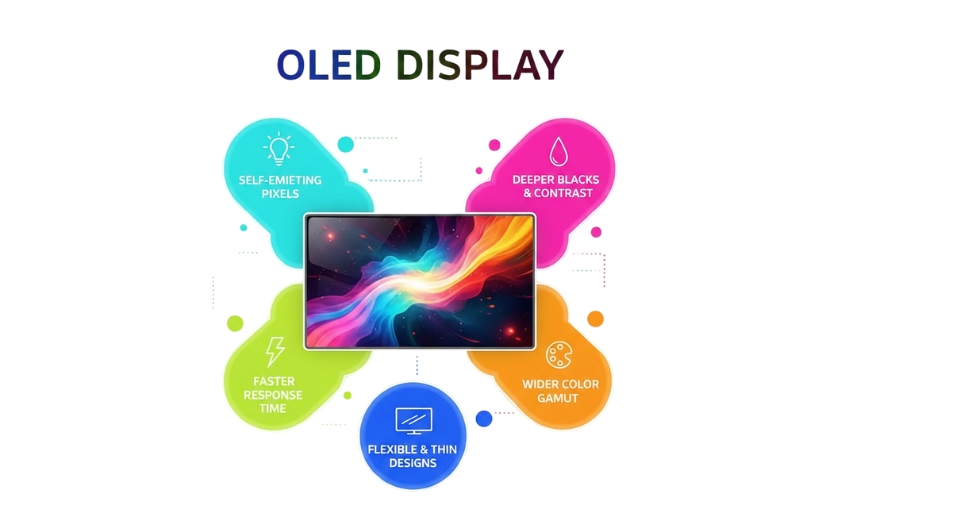
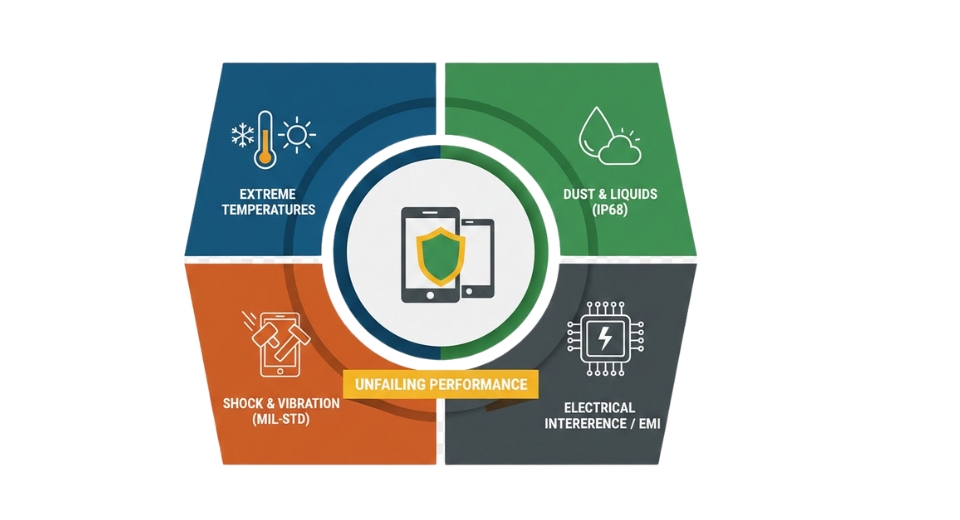


 US: +1 3023308252
US: +1 3023308252






